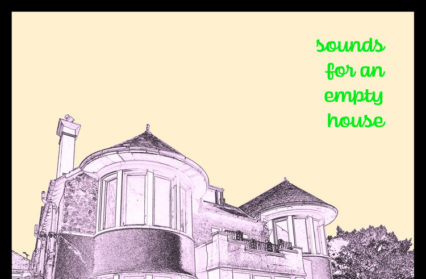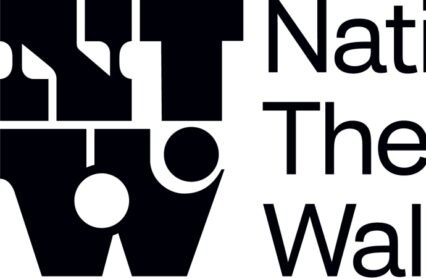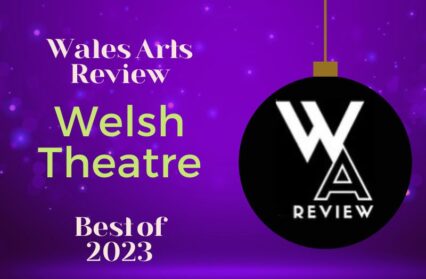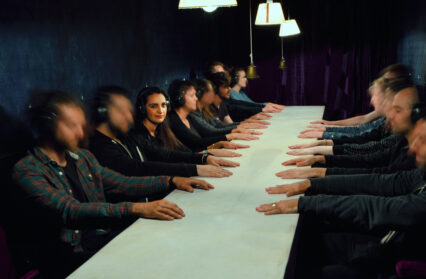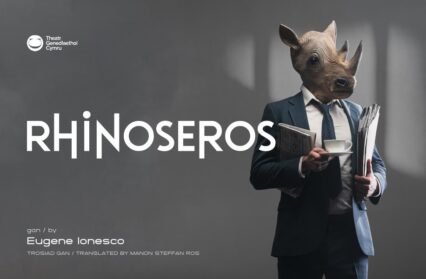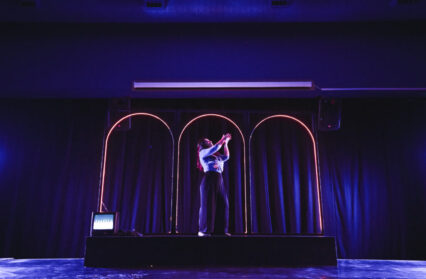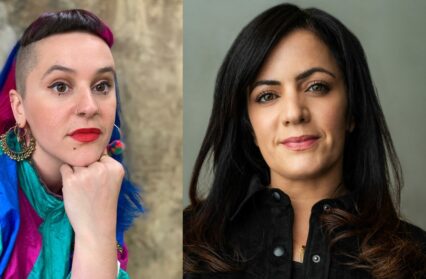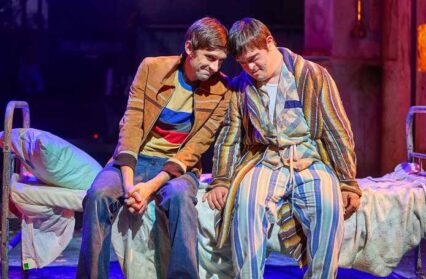James Lloyd reviews Sounds from an Empty House, a 24-hour audio livestream recorded in Plas Bodfa – an empty 100-year-old manor house – where artists fashioned soundscapes to inspire imagination, memory and much more through the sole medium of audio.
At 5am on the last weekend of June, Plas Bodfa Projects and Soundlands began their 24-hour livestream, Sounds for an Empty House. Now available on Youtube, 24 sound artists, musicians, poets, a contemporary dance company and many others were invited to respond to the sounds from the house both live and recorded, to augment and manipulate the sounds to create their own unique soundscapes. Soundlands has been working for ten years to represent and elevate the sound arts in Wales. Collaborating with Plas Bodfa Projects, they created this project, bringing it to the 100 year old manor house that has seen little human interference in the past 10 years. The idea for the project began with the house, to bring its ambient sounds to the fore and celebrate them, sounds so often heard but not listened to, or unavailable when living in a city. Without any visual accompaniment, the sounds of Plas Bodfa grew to become universal, familiar yet uncanny, and inspiring the imagination to attach memory and meaning to what was heard.
Plas Bodfa has had a varied history since it was built 100 years ago, and this can be heard through the performances. Originally a manor house, it later became a steak house, residential care home and tapestry kit company headquarters, with the intention of becoming a family home, holiday lets, art studios and a hub for cultural projects of all kinds. It felt as though even the sounds of the house being built could be heard with the use of power tools and hammering in Super Group’s performance, or the sounds of anonymous squelching in Bev Craddock’s. The many human sounds of the building could be heard, too. Etchasketch played sounds of a mandolin, FFRWD an accordion and Katherine Betteridge’s violin echoed about the house, as did her voice as she sang. In her hour in the house with Alan Holmes, Zoë Skoulding used her voice too, speaking and overlapping her poems into a cacophony of voices and sounds that echoed the many people to have come through the house. Lisa Heledd Jones provided a commentary of her time in the house, talking of the bats, the mirror in the darkness she is avoiding looking at and so on. The human voice punctuated all the artist’s hour of interactions, oftentimes as ambient and non-intrusive as the birdsong. The Post Premonition was an hour that featured the background sounds of people creaking through the rooms, giving tours and interacting with the house. You could hear the sun in their voices and the coolness of the house echoing in their steps.
But all the human sounds of the performances were often second to the ambient sounds of the house and its surroundings. The sounds of the garden birds, the jackdaws in the attic and the careening seagulls were allowed to come to the fore, elevated by the sound artists. The sheep and cows could be heard in the surrounding fields, blending sometimes seamlessly, other times in contradiction to the recorded sounds, those of the torrential rain from the day before, the torrents and the wind playing in the drains. Each sound artist was allowed to explore the rooms of the house as they chose. The only restriction was their time slot, naturally providing a wide variation to the ambience as day turned to night and back again. But the augmentation and manipulation of the artists elevated it, each exploring these sounds in their own way.
Art is so often visual, but save for the view of Plas Bodfa’s garden through a distorted plastic screen, the livestream had nothing to visually orientate the sounds being heard. All it indicated was the weather of the day, the light shifting from morning to afternoon, evening to night. Some sounds are unmistakable and grounding, even without visuals to guide us. The sounds of the jackdaws or the sheep, or the clinking of a teaspoon on tea china, as in Bev Craddock’s hour interaction. They are sounds so distinct we cannot help but see them in our mind’s eye.
Other sounds are less distinct, at the peripheries of our experience. Without visual orientation, you are left wondering its source. During Rob Spaull’s hour, I could not tell if it was the crackle of a fire or the needle of a record player. Bev Craddock used a beautifully blended sequence of sounds that made me doubt my ears. At first what sounded like tape being ripped became a typewriter, then squelching mud. The longer you listened the more squelchy it became. A listener of the live-stream commented that it sounded like lots of beetles munching, and as new sounds were slowly introduced, it was as though the “beetles” were put off from “munching” momentarily, only to resume again. In Accretion Entropy’s performance too, the rain turned to sea, to white noise, to the rush of traffic, the sounds washing seamlessly over each other. Ynyr Pritchard chose to do the opposite and cut abruptly in and out the sounds of wind and rain in an almost jarring manner. It forced you to focus, to listen. It reminded me of being deep in thoughts, far away, only to snap back to reality, the ambient sounds around you flooding back into your consciousness. During Angela Davies performance she reversed the sounds of chirping birds, reminding me of David Lynch’s dream sequences in Twin Peaks, and as I listened to the sound over and again I began to doubt whether they were reversed at all. Another listener commented that the sound was “a House Martin haircut.” Discussing on Radio Wales Arts Show with Nicola Heywood Thomas, etchasketch talked excitedly about the sound module he had that could take the biofeedback from plants and turn it into sound.
In this liminal sound space your imagination engages and the experience becomes interactive, not dictated. Without visuals to ground you, your imagination is free to speculate based on your own experience, connecting sound to places and memories, conjuring an emotional response. Super Group used what must have been a power tool in hindsight, but the sound took me home to my parents growing up, a hot Sunday evening, and my dad using the electric carving knife on a beef joint. From that sound alone I could smell the Yorkshire puddings and gravy. The same sound could trigger an infinite number of responses from an infinite number of people with different backgrounds.
I was not the only one to be “transported”, as another listener commented while congratulating Bev Craddock for her performance. I’m sure she meant she was transported to Plas Bodfa, but it was not where my mind was going. Listening to the sounds of torrential rain I was taken to those places where I had experienced it; taking shelter under a tree as a child, or watching the air turn blue in Germany before the heaviest downpour I’ve ever seen. The sounds of sheep from the fields around Plas Bodfa made another listener recall her childhood, growing up around the Long Mynd in Shropshire. The listener provides their own visuals, be it memory or imagination. As the sound artists took these sounds and manipulated them, introduced new sounds and made the familiar unfamiliar, the effect was a constant and subtle shifting of your own perspective. As with poetry, the association of sounds with others creates new meanings, making new connections. The sounds of the house cannot be heard quite the same way again. Since listening to the livestream, the ambient sounds of my own home have become more pronounced, and I hear Plas Bodfa in the calls of my local jackdaws.
The livestream was only the first part of the project, with each performance now available on Youtube. The recordings of the livestream and the sounds of the house will be made available worldwide for the composition of new work, work which can be submitted to Plas Bodfa before the deadline on September 14th. The submissions for this open call will be co-published as a joint digital media album with Welsh experimental music labels Amgueddfa Llwch, Listen to the Voice of Fire, and Recordiau Prin. Twenty four artists have each created entirely unique soundscapes, and with the possibility of new work submitted worldwide, it’s exciting to think of the endless possibilities for new sounds and music.
There is perhaps something of the sacred in creating sounds for an empty house. It is as though the sound artists’ interactions were never for us, but for Plas Bodfa itself, its many rooms, its many inhabitants, human or otherwise, present, past or future. Sounds for an Empty House is a poetic call and response, a duet with all the natural sounds we so often do not listen to. The livestream gave these neglected sounds the stage, elevated by the sound artists and heard afresh. Without the grounding of visuals, your imagination is free to roam about them, reconnecting with old experiences and connecting with new ones. Truthfully I hadn’t fully considered the possibilities of sound art, but its potential is on display for all to hear in Plas Bodfa Projects and Soundland’s Sounds for an Empty House.
You can access the full 24-hour livestream from Plas Bodfa and more information about the project here.


